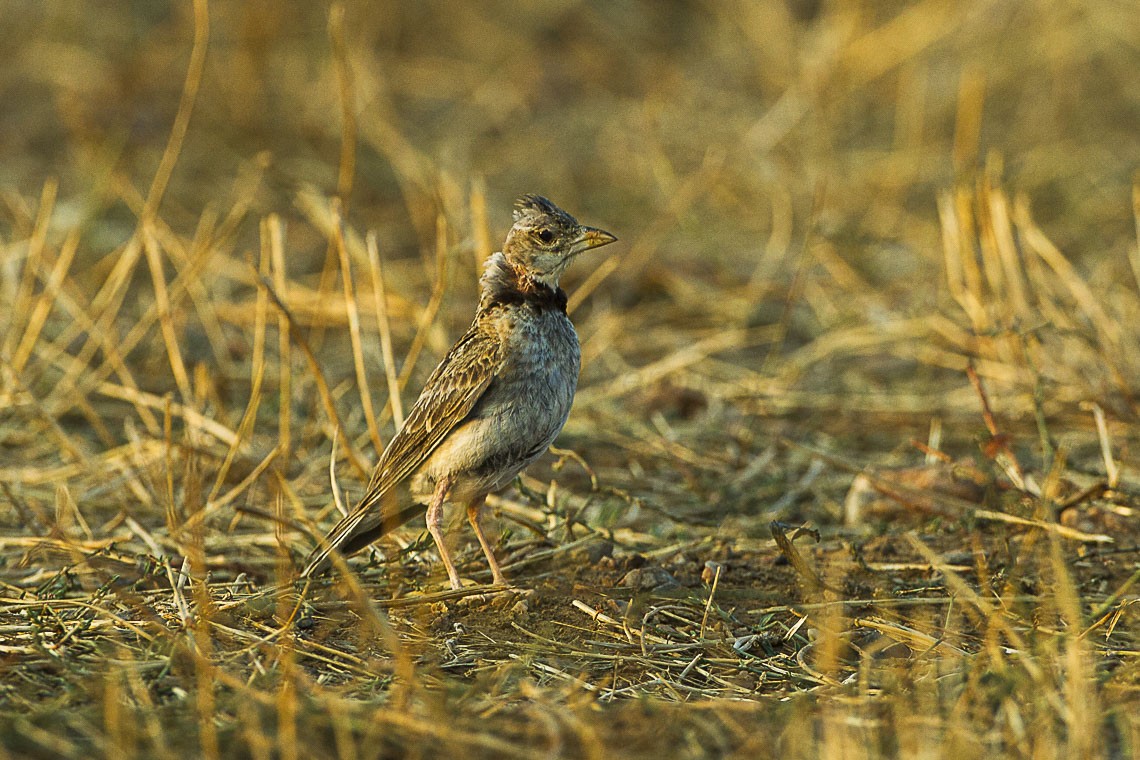Calandra Lark
A species of Black and Black-necked Larks Scientific name : Melanocorypha calandra Genus : Black and Black-necked Larks
Calandra Lark, A species of Black and Black-necked Larks
Botanical name: Melanocorypha calandra
Genus: Black and Black-necked Larks
Content
Description General Info
 Photo By Francesco Veronesi , used under CC-BY-SA-2.0 /Cropped and compressed from original
Photo By Francesco Veronesi , used under CC-BY-SA-2.0 /Cropped and compressed from original Description
This is a large, robust lark, 17.5–20 cm long. It is an undistinguished-looking species on the ground, mainly streaked greyish brown above and white below, and with large black patches on the breast sides. It has a white supercilium. In flight it shows short broad wings, which are dark below, and a short white-edged tail. The wing and tail patterns are distinctions from its more easterly relatives. The song is like a slower version of that of the skylark. 
Size
20 cm
Life Expectancy
5 years
Nest Placement
Ground
Feeding Habits
Calandra Lark's diet varies seasonally, consuming mainly insects in spring and seeds in winter. Feeds on a range of invertebrates, especially grasshoppers and caterpillars, as well as cereal and weed seeds. Calandra Lark requires water and expends about 320 kJ of energy daily. Calandra Lark forages on the ground, often in flocks, running and pecking or digging for food, and may occasionally hover to inspect bush tops.
Habitat
The calandra Lark is commonly found in open plains, favoring grassland ecosystems such as steppes and dry pastures. It has a preference for unirrigated legume and barley fields, and often occupies cereal cultivation areas, including fallows and field margins. The species primarily thrives in lowland regions but can reside at altitudes up to 1400 meters, occasionally reaching 2000 meters. It avoids deserts, semi-deserts, and rocky areas, and exhibits migratory behavior in its eastern range during winter.
Dite type
Granivorous
General Info
Feeding Habits
Bird food type
Behavior
This species occupies open plains, from steppes and pastures to extensive dry cereal cultivations and true steppe with dense grass cover. In the Mediterranean Basin it is mainly found in dry pastures and dry cultivations. In cultivated areas, it prefers fallows, long-fallows and field edges and to a lesser extent sown fields, selecting unirrigated legumes and barley fields. The species is monogamous and lays eggs from early April to July. The nest is made from grass stems and small leaves, lined with softer material and built in a shallow depression on the ground, often under a tussock. Clutches are usually three to six eggs (de Juana and Suárez 2004). Its diet is seasonal, feeding mostly on insects in the summers and seeds and grass shoots in the winter. Mediterranean populations are resident, forming large flocks in the autumn and winter (Snow and Perrins 1998, de Juana and Suárez 2004). Eastern populations are migratory or partially migratory (de Juana and Suárez 2004). Parasites of the calandra lark include the chewing louse Ricinus vaderi, described from specimens collected in Azerbaijan. 
Distribution Area
It is mainly resident in the west of its range, but Russian populations of this passerine bird are more migratory, moving further south in winter, as far as the Arabian peninsula and Egypt. It is a very rare vagrant to western Europe. This is a bird of open cultivation and steppe. Its nest is on the ground, with 4–5 eggs being laid. Food is seeds supplemented with insects in the breeding season. It is gregarious outside the breeding season. 
Species Status
Not globally threatened.